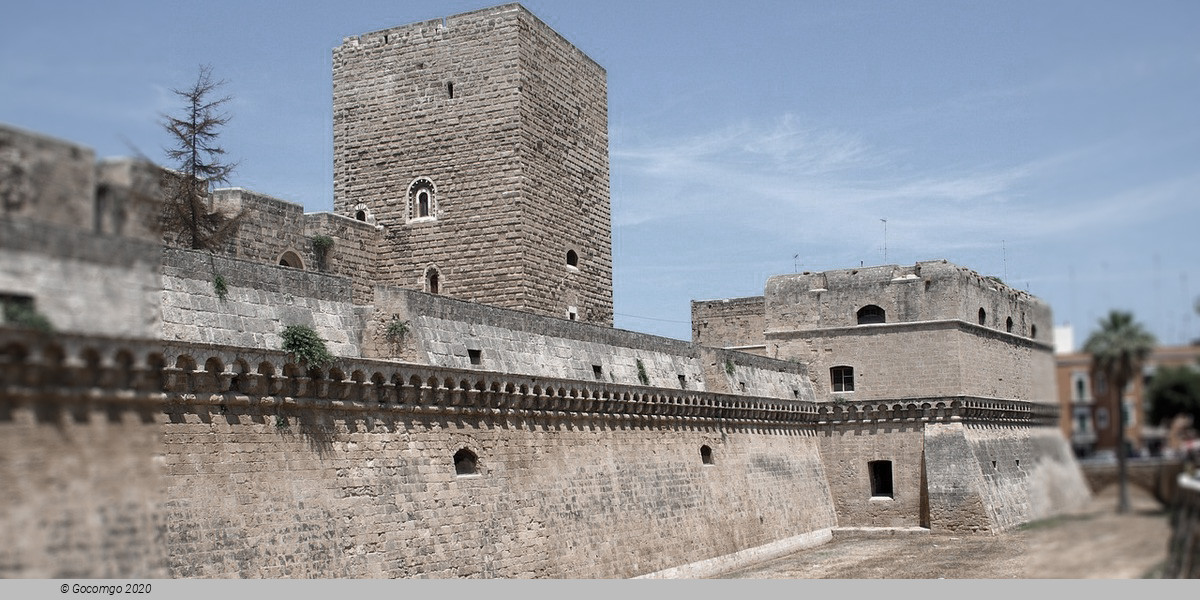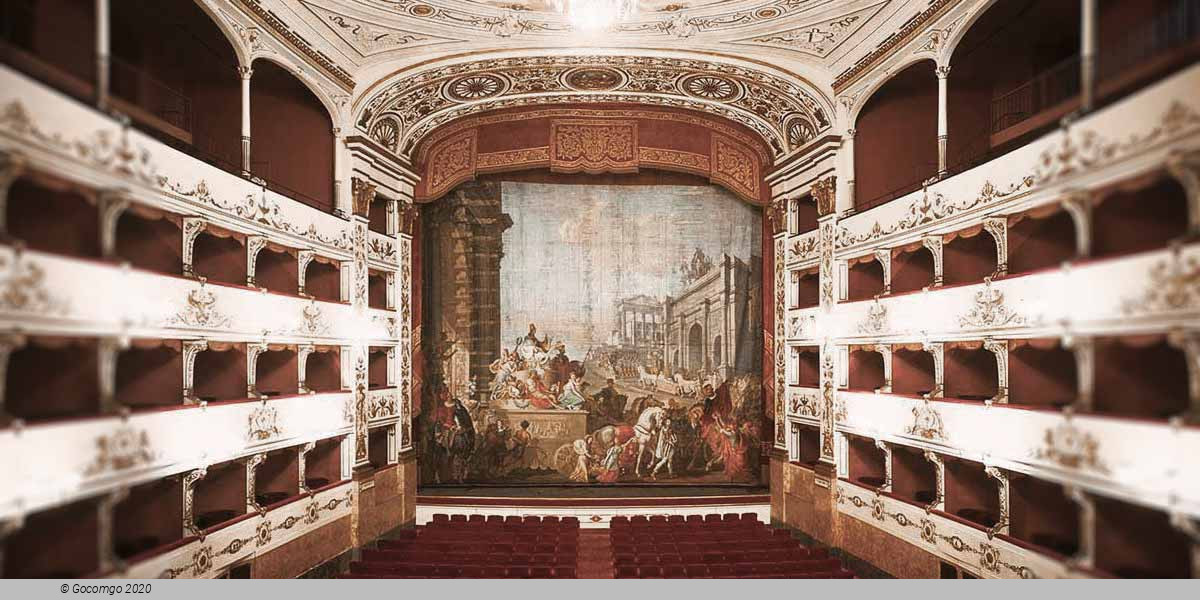Venues in Bari

Bari is the capital city of the Metropolitan City of Bari and of the Apulia region, on the Adriatic Sea, in southern Italy. It is the second most important economic centre of mainland Southern Italy after Naples (and the third after Palermo, if Insular Italy is included), a port and university city, as well as the city of Saint Nicholas.
History
Ancient
The city was probably founded by the Greeks. The city had strong Greek influences and once it passed under Roman rule in the 3rd century BC, it developed strategic significance as the point of junction between the coast road and the Via Traiana and as a port for eastward trade; a branch road to Tarentum led from Barium. Its harbour, mentioned as early as 181 BC, was probably the principal one of the districts in ancient times, as it is at present, and was the centre of a fishery. The first historical bishop of Bari was Gervasius who was noted at the Council of Sardica in 347. The bishops were dependent on the Patriarch of Constantinople until the 10th century.
Middle Ages
After the devastations of the Gothic Wars, under Longobard rule a set of written regulations was established, the Consuetudines Barenses, which influenced similar written constitutions in other southern cities. Until the arrival of the Normans, Bari continued to be governed by the Longobards and Byzantines, with only occasional interruption.
Throughout this period, and indeed throughout the Middle Ages, Bari served as one of the major slave depots of the Mediterranean, providing a central location for the trade in Slavic slaves. The slaves were mostly captured by Venice from Dalmatia, the Holy Roman Empire from what is now Prussia and Poland, and the Byzantines from elsewhere in the Balkans, and were generally destined for other parts of the Byzantine Empire and (most frequently) the Arabs states surrounding the Mediterranean: the Abbasid Caliphate, the Umayyad Caliphate of Córdoba, the Emirate of Sicily, and the Fatimid Caliphate (which relied on Slavs purchased at the Bari market for its legions of Sakalaba Mamluks).
For 20 years, Bari was the centre of the Emirate of Bari; the city was captured by its first emirs Kalfun in 847, who had been part of the mercenary garrison installed there by Radelchis I of Benevento. The city was conquered and the emirate extinguished in 871 following five-year campaign by Emperor Louis II, assisted by a Byzantine fleet. Chris Wickham states Louis spent five years campaigning to reduce then occupy Bari, "and then only to a Byzantine/Slav naval blockade"; "Louis took the credit" for the success, adding "at least in Frankish eyes", then concludes by noting that by remaining in southern Italy long after this success, he "achieved the near-impossible: an alliance against him of the Beneventans, Salernitans, Neapolitans and Spoletans; later sources include Sawadān as well." In 885, Bari became the residence of the local Byzantine catapan, or governor. The failed revolt (1009–1011) of the Lombard nobles Melus of Bari and his brother-in-law Dattus, against the Byzantine governorate, though it was firmly repressed at the Battle of Cannae (1018), offered their Norman adventurer allies a first foothold in the region. In 1025, under the Archbishop Byzantius, Bari became attached to the see of Rome and was granted "provincial" status.
In 1071, Bari was captured by Robert Guiscard, following a three-year siege. Maio of Bari (died 1160), a Lombard merchant's son, was the third of the great admirals of Norman Sicily. The Basilica di San Nicola was founded in 1087 to receive the relics of this saint, which were surreptitiously brought from Myra in Lycia, in Byzantine territory. The saint began his development from Saint Nicholas of Myra into Saint Nicholas of Bari and began to attract pilgrims, whose encouragement and care became central to the economy of Bari. In 1095 Peter the Hermit preached the first crusade there. In October 1098, Urban II, who had consecrated the Basilica in 1089, convened the Council of Bari, one of a series of synods convoked with the intention of reconciling the Greeks and Latins on the question of the filioque clause in the Creed, which Anselm ably defended, seated at the pope's side. The Greeks were not brought over to the Latin way of thinking, and the Great Schism was inevitable.
A civil war broke out in Bari in 1117 with the murder of the archbishop, Riso. Control of Bari was seized by Grimoald Alferanites, a native Lombard, and he was elected lord in opposition to the Normans. By 1123, he had increased ties with Byzantium and Venice and taken the title gratia Dei et beati Nikolai barensis princeps. Grimoald increased the cult of St Nicholas in his city. He later did homage to Roger II of Sicily, but rebelled and was defeated in 1132.
Bari was occupied by Manuel I Komnenos between 1155 and 1158. In 1246, Bari was sacked and razed to the ground; Frederick II, Holy Roman Emperor and King of Sicily, repaired the fortress of Baris but it was subsequently destroyed several times. Bari recovered each time.
Early modern period
Isabella d’Aragona, princess of Naples and widow of the Duke Gian Galeazzo Sforza of Milan, enlarged the castle, which she made her residence, 1499–1524. After the death of Queen Bona Sforza, of Poland, Bari came to be included in the Kingdom of Naples and its history contracted to a local one, as malaria became endemic in the region. Bari was awakened from its provincial somnolence by Napoleon's brother-in-law Joachim Murat. As Napoleonic King of Naples, Murat ordered the building in 1808 of a new section of the city, laid out on a rationalist grid plan, which bears his name today as the Murattiano. Under this stimulus, Bari developed into the most important port city of the region. The legacy of Mussolini can be seen in the imposing architecture along the seafront.
World War II
On 11 September 1943, in connection with the Armistice of Cassibile, Bari was taken without resistance by the British 1st Airborne Division, then during October and November 1943, New Zealand troops from the 2nd New Zealand Division assembled in Bari.
The Balkan Air Force supporting the Yugoslav partisans was based at Bari.
The 1943 chemical warfare disaster
Through a tragic coincidence intended by neither of the opposing sides in World War II, Bari gained the unwelcome distinction of being the only European city in the course of that war to experience effects like those of chemical warfare.
On the night of 2 December 1943, 105 German Junkers Ju 88 bombers attacked the port of Bari, which was a key supply centre for Allied forces fighting their way up the Italian Peninsula. Over 20 Allied ships were sunk in the overcrowded harbour, including the U.S. Liberty ship John Harvey, which was carrying mustard gas; mustard gas was also reported to have been stacked on the quayside awaiting transport (the chemical agent was intended for retaliation if German forces had initiated chemical warfare). The presence of the gas was highly classified and the U.S. had not informed the British military authorities in the city of its existence. This increased the number of fatalities, since British physicians—who had no idea that they were dealing with the effects of mustard gas—prescribed treatment proper for those suffering from exposure and immersion, which proved fatal in many cases. Because rescuers were unaware they were dealing with gas casualties, many additional casualties were caused among the rescuers, through contact with the contaminated skin and clothing of those more directly exposed to the gas.
Following the attack, the harbor was closed for operations for three weeks and it did not return to full capacity until February 1944.
A member of U.S. General Dwight D. Eisenhower's medical staff, Stewart F. Alexander, was dispatched to Bari following the raid. Alexander had trained at the Army's Edgewood Arsenal in Maryland, and was familiar with some of the effects of mustard gas. Although he was not informed of the cargo carried by the John Harvey, and most victims suffered atypical symptoms caused by exposure to mustard diluted in water and oil (as opposed to airborne), Alexander rapidly concluded that mustard gas was present. Although he could not get any acknowledgement of this from the chain of command, Alexander convinced medical staffs to treat patients for mustard exposure and saved many lives as a result. He also preserved many tissue samples from autopsied victims at Bari. After World War II, these samples would result in the development of an early form of chemotherapy based on mustard, Mustine.
On the orders of Allied leaders Franklin D. Roosevelt, Winston Churchill, and Eisenhower, records were destroyed and the whole affair was kept secret for many years after the war. The U.S. records of the attack were declassified in 1959, but the episode remained obscure until 1967, when writer Glenn B. Infield exposed the story in his book Disaster at Bari. Additionally, there is considerable dispute as to the exact number of fatalities. In one account: "[S]ixty-nine deaths were attributed in whole or in part to the mustard gas, most of them American merchant seamen". Others put the count as high as "more than one thousand Allied servicemen and more than one thousand Italian civilians".
Part of the confusion and controversy derives from the fact that the German attack, which became nicknamed "The Little Pearl Harbor" after the Japanese air attack on the American naval base in Hawaii, was highly destructive in itself, apart from the effects of the gas. Attribution of the causes of death to the gas, as distinct from the direct effects of the German attack, has proved far from easy.
The affair is the subject of two books: Disaster at Bari, by Glenn B. Infield, and Nightmare in Bari: The World War II Liberty Ship Poison Gas Disaster and Coverup, by Gerald Reminick.
In 1988 through the efforts of Nick T. Spark, U.S. Senators Dennis DeConcini and Bill Bradley, Dr. Stewart Alexander received recognition from the Surgeon General of the United States Army for his actions during the Bari disaster.
Charles Henderson explosion
The port of Bari was again struck by disaster on 9 April 1945 when the Liberty ship Charles Henderson exploded in the harbour while offloading 2000 tons of aerial bombs (half of that amount had been offloaded when the explosion occurred). Three hundred and sixty people were killed and 1730 were wounded. The harbour was again rendered nonoperational, this time for a month.


